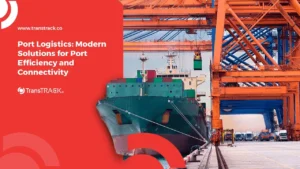Indonesia to Lead E-Commerce Logistics Business in Southeast Asia
Posted on September 2, 2024 by Nur Wachda Mihmidati

Southeast Asian economies have shown remarkable resilience in the face of various challenges in recent years, which provides a positive business outlook for the region’s logistics industry. The continuation of this growth is particularly likely with the encouraging developments in the e-commerce sector.
A study of the third-party logistics market in Southeast Asia forecasts a compound annual growth rate (CAGR) of 5.5% through 2025, with the market value expected to reach $55.7 billion by that year. If this trend continues, the market value of the region’s logistics business is expected to reach $85.2 billion by 2033.
This rapid growth in the logistics industry is mainly driven by the advancement of the e-commerce sector across the region. From 2016 to 2021, the total value of e-commerce sales in Southeast Asia increased fivefold, with annual growth reaching 40%. In addition, the share of the e-commerce sector in overall retail sales jumped from 5% to 20%.
These developments are creating a greater need for efficient and innovative logistics solutions. Logistics companies are required to increase their capacity and capabilities in order to meet the growing demand. Advanced technologies, such as supply chain management systems and data analytics, are becoming increasingly important to improve efficiency and reduce operational costs.

Indonesia Leads E-Commerce Growth in Southeast Asia
Indonesia has become the leader in e-commerce Gross Merchandise Volume (GMV) in Southeast Asia, according to a report from Google, Temasek, and Bain & Company. The rapid growth of e-commerce in Indonesia is fueled by increased internet access, widespread smartphone usage, and changing consumer behavior that prefers online shopping. This creates significant demand for efficient and fast logistics services, making Indonesia a strategic e-commerce hub in the region.
Along with these developments, institutions such as the Economic Research Institute for ASEAN and East Asia (ERIA) and PwC have put forward recommendations to address the challenges in the changing logistics business landscape. The recommendations include the adoption of advanced technology, collaboration between stakeholders, a focus on sustainability, and improved human capital. With these measures, the business logistics industry in Southeast Asia can be better equipped to capitalize on the opportunities offered by the rapid growth of e-commerce.

Market Dynamics of Logistics Business
Driving Factors
The rapid growth of the e-commerce industry and increasing trade deals are the major factors driving the growth of the business logistics market. E-commerce, which includes buying and selling of goods over the internet, relies on third-party service providers for the delivery of goods to customers. These logistics services not only help in supply chain management but also allow e-commerce businesses to focus on marketing and other company operations. According to a recent UNCTAD report, e-commerce sales reached $25.6 trillion in 2018, equivalent to 30% of global GDP, with B2B e-commerce contributing $21 trillion. The growth of cross-border sales and the rapid expansion of consumers, with more than 1.4 billion people making online purchases in the year, further strengthened the business logistics market.
Constraints and Opportunities
However, the logistics business market is also faced with constraints such as inconsistent government standards. Many transportation and logistics companies are focusing on improving supply chain efficiency to increase profitability. The lack of government involvement in logistics standardization, especially in European countries such as the UK and Germany, hinders the development of this industry. On the other hand, there are opportunities emerging with the introduction of advanced warehouse management systems (WMS). Many companies have yet to adopt a WMS or are still using older systems without essential features. WMS upgrades are expected to increase as companies focus on improving logistics services. In addition, the COVID-19 pandemic has had a significant negative impact, but has also opened up opportunities for post-pandemic market growth, along with increasing demand and the need for space efficiency. The road segment, which is dominant in transportation, has grown in line with the increasing demand for vehicles to transport retail products, particularly in the domestic market.
The Role of Warehouse Management System for Logistics Business from TransTRACK
Although the logistics business market is faced with constraints such as inconsistent government standards and lack of government involvement in standardization, opportunities remain, especially with the development of technology. One significant opportunity that has emerged is the need to improve operational efficiency in warehouses through the implementation of sophisticated management systems. This is where Warehouse Management System (WMS) from TransTRACK plays an important role.
TransTRACK’s WMS is designed to optimize inventory management and goods flow, assisting companies in overcoming existing challenges and capitalizing on potential growth in the market. With a range of advanced features on offer, the system enables companies to increase efficiency, reduce operational costs, and ultimately improve customer satisfaction.
TransTRACK WMS Key Features:
- Real-Time Inventory Management: TransTRACK WMS provides real-time inventory monitoring, allowing users to get accurate information on the number of items available, storage locations, and product status. This helps in making faster and more efficient decisions.
- Automatic Storage and Placement: The system comes with an auto-storage feature that determines the best storage location for each product based on size, weight, and picking frequency. This maximizes the use of warehouse space and speeds up the picking process.
- Receiving and Shipping Process Settings: TransTRACK WMS simplifies the process of receiving and shipping goods by providing an easy-to-use interface for recording transactions. This feature helps reduce errors and improve accuracy in the management of incoming and outgoing goods.
- Efficient Workflow Mapping: The system allows companies to map and manage warehouse workflows, including picking, packing, and shipping. With clear mapping, processes can be optimized to reduce operational time and costs.
- Integration with Other Systems: TransTRACK WMS can be integrated with other management systems, such as Transport Management System (TMS) and Enterprise Resource Planning (ERP). This integration ensures a smooth flow of information throughout the supply chain.
- Analytics and Performance Reports: Advanced analytics features provide detailed performance reports on warehouse activities, including processing time, inventory levels, and picking efficiency. These reports provide valuable insights for continuous improvement.
- Support for Multi-Warehouse: TransTRACK WMS supports the management of multiple warehouse locations simultaneously, allowing companies to manage operations across multiple locations in a coordinated and efficient manner.
Conclusion
With TransTRACK’s WMS, companies can increase visibility and control over their warehouse operations. The advanced features offered help in improving efficiency, reducing costs, and increasing customer satisfaction, making this system an ideal solution for warehouse management needs in the modern era.
Recent Post
Topic :
 Bahasa Indonesia
Bahasa Indonesia









